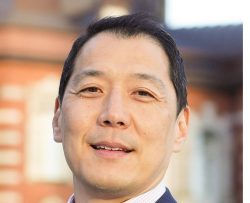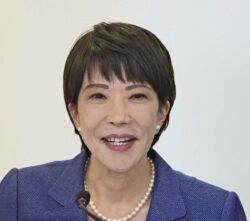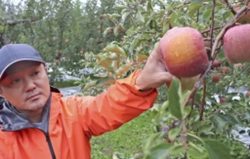Guideline of Measures for Aging Society: Govt Must Bolster Public Confidence in Social Security System as A Whole
15:41 JST, October 4, 2024
As Japan’s population ages at a pace unparalleled anywhere in the world, it is essential to constantly review the social security system to ensure that people can live their retirement years with peace of mind.
Who should bear the costs necessary for pension premiums, medical care and nursing care, and how should these costs be covered? The Cabinet of Prime Minister Shigeru Ishiba should discuss this issue head-on. It is important for the ruling and opposition parties to present their reform proposals in the upcoming House of Representatives election and seek the public’s judgment on them.
For the first time in six years, the government has revised its Guideline of Measures for Aging Society, which outlines the direction of measures for the elderly.
The guideline points out that “dividing society into a ‘supporting side’ and a ‘supported side’ based on age is no longer in line with reality,” and stresses the need to increase the number of people on the “supporting side” by creating an environment that allows elderly people to work comfortably.
Currently, those aged 65 or older account for 29% of the total population, the highest rate of aging in the world. The rate is expected to reach 39% in 2070.
It is unreasonable for the working-age generations alone to support the elderly, who will likely account for nearly 40% of the population. It is inevitable to ask healthy and motivated elderly people to stand on the “supporting side” and bear their fair share of the burden.
Regarding the medical care system for the elderly aged 75 or older, the guideline states that the government will discuss expanding the number of people whose out-of-pocket payment is 30% of their medical expenses. Currently, the out-of-pocket payment for the age bracket is 10% in principle, with the burden increasing to 20% or 30% depending on income.
However, if the out-of-pocket payment for many elderly people who depend on pension benefits for their income is raised, more people may refrain from seeing a doctor, which could contribute to the deterioration of their health. Careful consideration is necessary.
As for pension reform, there is ongoing debate over revision of the old-age pension rules for those still working.
Under the existing rules, a person’s pension benefits are reduced when their total amount of salary and pension benefits exceeds a certain amount. However, it has been pointed out that this discourages the elderly from working. Many in the business community, which is suffering from a labor shortage, are calling for the abolition of this rule.
If the rule is abolished, the amount of pension benefits will increase and there will be a shortfall in pension financing, which would have to be covered by the premiums paid by working-age generations. Is it reasonable to increase the burden on the working-age generations?
Twenty years ago, the government and the ruling parties said that the pension system would be “secure for 100 years,” stressing that the pension system could be maintained even with an aging population. However, the declining birth rate has become more serious than was assumed at that time, and many are concerned about the sustainability of the system.
In addition to the reform of the old-age pension program for those still working, it is necessary to dispel concerns about life after retirement, including the pension system as a whole and nursing care.
To enhance the credibility of the social security system, stable financial resources must be secured. It can be said that a consumption tax rate hike is an important option.
(From The Yomiuri Shimbun, Oct. 4, 2024)
"Editorial & Columns" POPULAR ARTICLE
-

Violations of Subcontract Law: Major Automakers Must Eliminate Old Practices
-

Local Governments’ Tax Revenues: Devise Ways to Correct Imbalances in Tax Sources
-

5 Japanese Business Dinner Mistakes to Avoid — and What They Taught Me About Business in Japan
-

Heavy Rains in Asia: Support for Victims, Flood-Control Measures Urgently Needed
-

Rice Coupons: A Misguided Approach to Countering Rising Prices
JN ACCESS RANKING
-

Tokyo Economic Security Forum to Hold Inaugural Meeting Amid Tense Global Environment
-

Keidanren Chairman Yoshinobu Tsutsui Visits Kashiwazaki-Kariwa Nuclear Power Plant; Inspects New Emergency Safety System
-

Imports of Rare Earths from China Facing Delays, May Be Caused by Deterioration of Japan-China Relations
-

University of Tokyo Professor Discusses Japanese Economic Security in Interview Ahead of Forum
-

Japan Pulls out of Vietnam Nuclear Project, Complicating Hanoi’s Power Plans




















